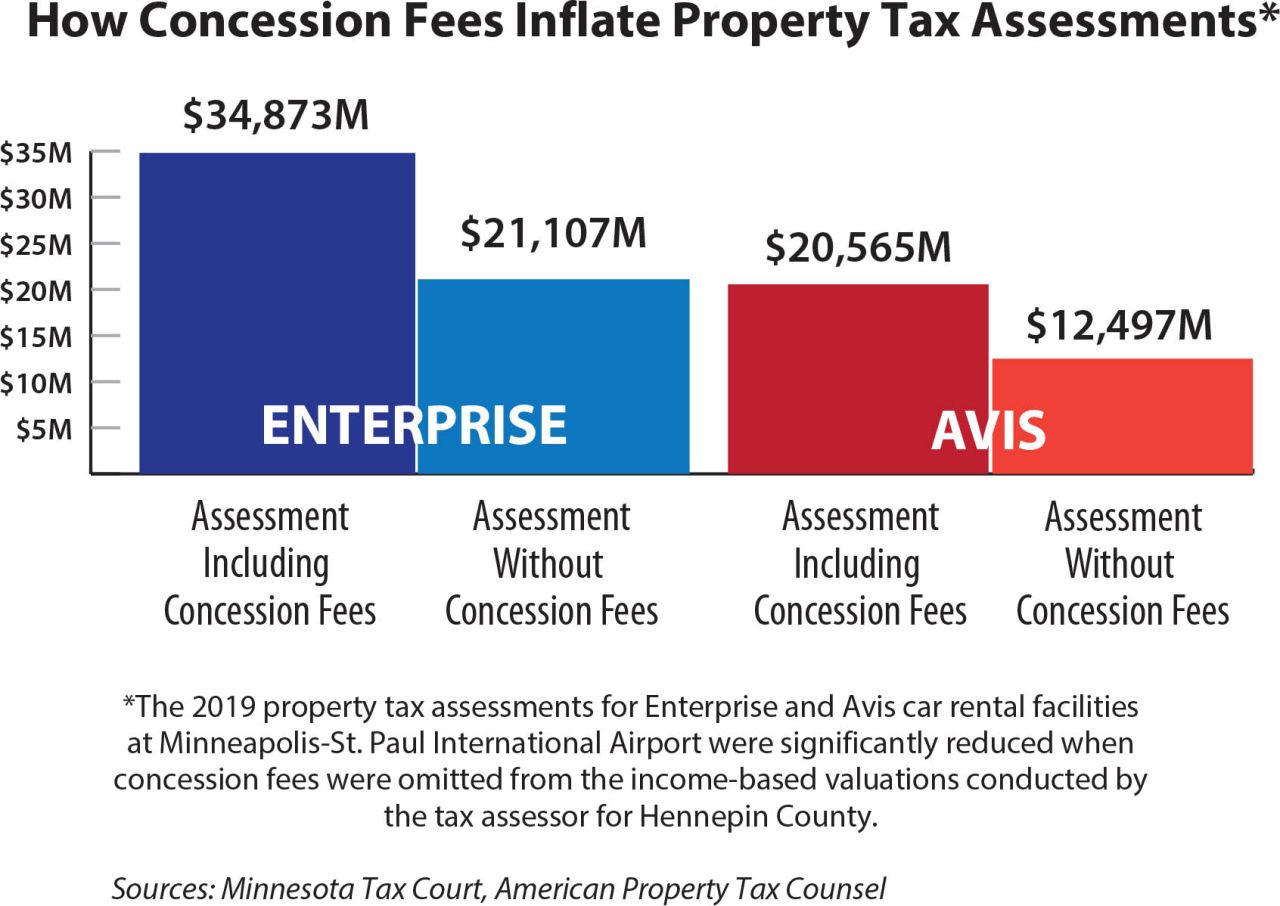Rate increases to offset a shrinking property tax base will further erode commercial real estate values.
Across the country, local governments are struggling to maintain revenue amid widespread property value declines, as a result they are resorting to tax rate increases. This funding challenge increases the burden on owners of commercial properties that are already suffering and ultimately degrades property values and the overall tax base. Let's examine how this unfortunate and predictable scenario plays out, and the negative impact it inflicts on commercial real estate values.
Rate-to-value dynamics
A commercial property's taxes depend on its assessed value, which represents the property's market value determined by a local government assessor. The assessed value multiplied by the tax rate determines the property tax owed.
Taxing entities calculate the tax rate by dividing the budget, or dollar amount levied for an area, by the total assessed value of all properties within the jurisdiction. Taxpayers can multiply the resulting tax rate, also known as a mill rate, by the assessed value of their individual property to determine the tax owed.
How can decreasing assessed property values lead to an increase in tax rates? When property values decline, the overall property tax base shrinks. The local government's fiscal needs remain stable, however, or might increase due to inflation and the growth of public services. If the government does not reduce either its budget or levy requirements, tax rates will rise as the tax base declines.
Tax levying methods vary from state to state and can differ across real estate classes, so there are few convenient, apples-to apples-comparisons available. However, a chart of year-over-year changes in the property tax rates of Boston, Minneapolis and Denver captures the beginning of an upward trend. The percentages in the chart represent an increase or decrease from the year before.
| Year-Over-Year Changes in Property Tax Rates | |||
| Tax Year | Boston | Minneapolis | Denver |
| 2023 | -1.20% | -5.85% | +6.58% |
| 2024 | +2.39% | -0.03% | -2.56% |
| 2025 | +2.73% | +12.13% | +2.21% |
Sources: City of Boston published commercial tax rates; Hennepin County published tax rate cards; City of Denver published abstract of assessment and summary of levies.
Property taxes trail the market because assessed values reflect market data from before the assessment year. For example, taxes payable in 2025 may be based on values set in 2024 and based on data from 2023. As a result, with values continuing to decline, tax rates are likely to continue rising.
This scenario creates a challenging environment for commercial property owners, who face increased tax rates as property values decline, affecting investment decisions and lowering market stability.
Impact on real estate value
Increasing tax rates affect commercial properties in two significant ways: One is to reduce net operating income (NOI) for gross-leased properties, in which the landlord pays expenses; the second way is to increase occupancy costs for tenants in net-leased properties, which pass expenses through to tenants.
In gross-leased properties such as apartments, the landlord pays all expenses including real estate taxes. Higher tax rates consume more of the landlord's income, and that NOI reduction decreases the property's market value. For example, if the effective tax rate increases from 2.0% to 2.15% on a $10 million building, the taxes would increase by $15,000.
| Assessed value | $10 million | $10 million |
| Effective tax rate | 2.0% | 2.15% |
| Real estate tax | $200,000 | $215,000 |
The additional $15,000 in taxes will come straight off the building's net income, which translates directly into a value loss.
Tenants with triple-net leases pay a base rent plus all expenses. In reference to commercial property taxes, it is not uncommon to hear, "the tenant pays it anyways, so it doesn't matter to the landlord." However, just as landlords are sensitive to cost increases in gross-leased buildings, tenants are sensitive to increases in total occupancy cost (rent plus expenses).
For example, a tenant with $25 per-square-foot net rent and $15 per square foot in operating expenses has a total occupancy cost of $40 per square foot. If the taxes increase by $1 per square foot, then their total occupancy cost will increase to $41 per square foot.
For tenants, a rise in occupancy cost is akin to a rent increase. If expenses become too high, they may demand a rent reduction or relocate to a more affordable building. Thus, the increased tax rate impacts building value through reduced rent or lower occupancy.
Clearly, increasing property tax rates have a significant impact on commercial real estate values. As assessed values decline and local governments let tax rates rise to meet their fiscal needs, the environment for commercial property owners grows more challenging. This leads to reduced income for landlords and increased occupancy costs for tenants, ultimately diminishing asset values, impeding investment decisions and eroding market stability.




